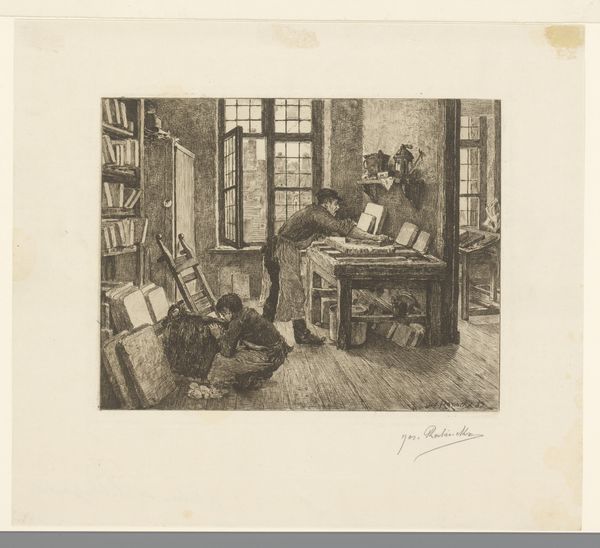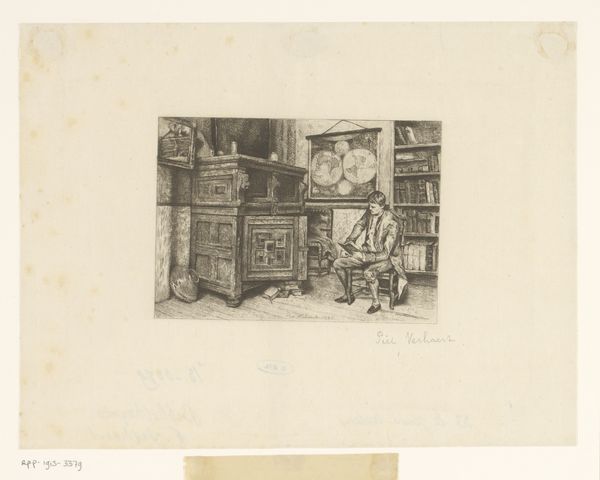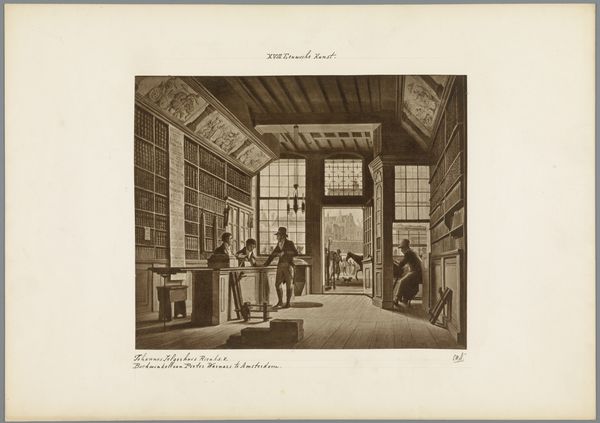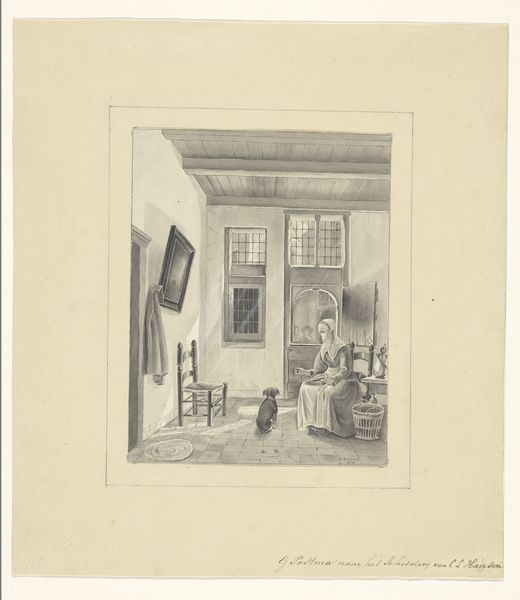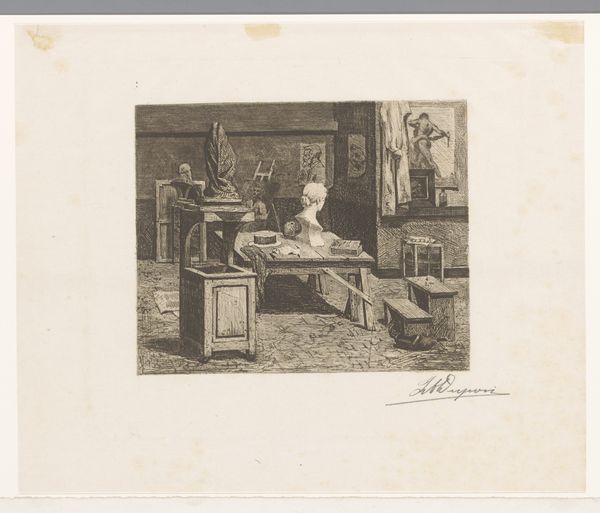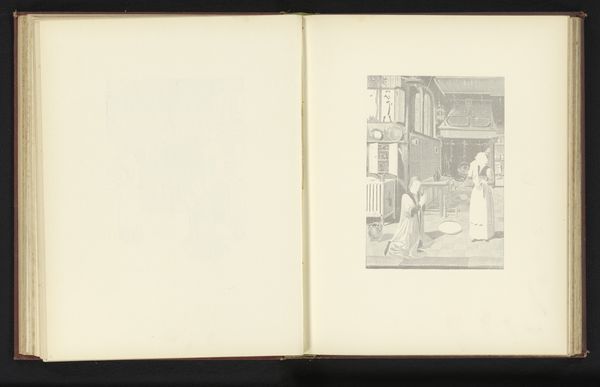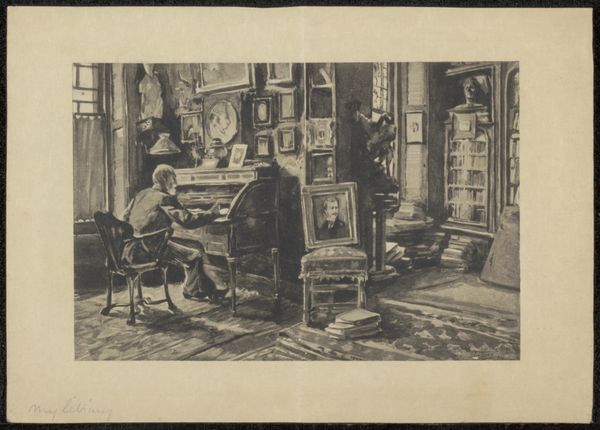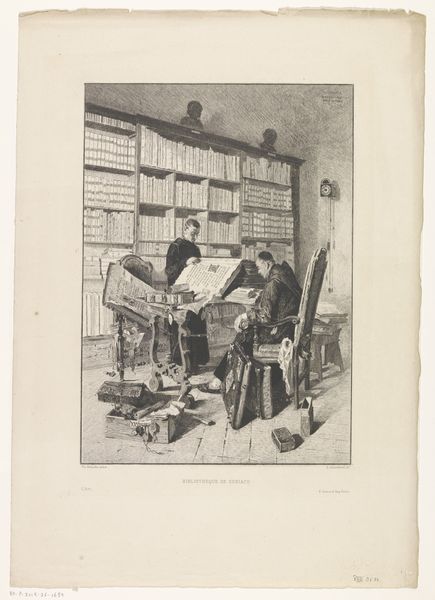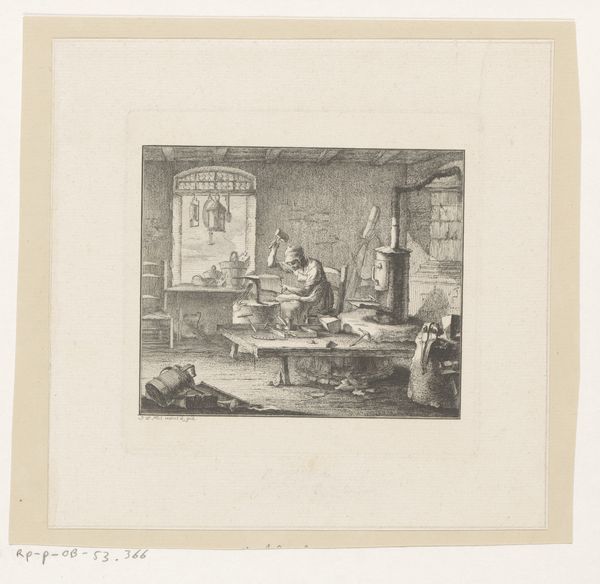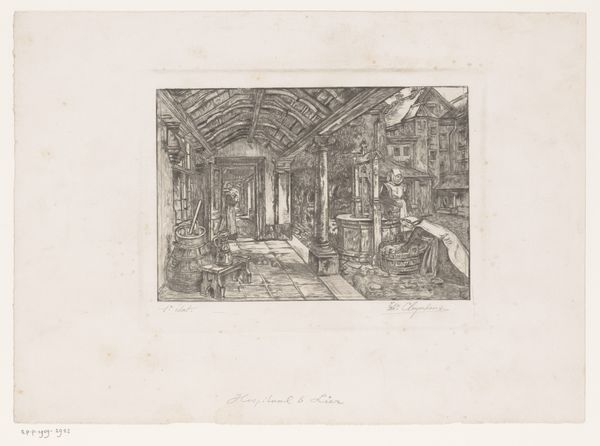
drawing, paper, ink
#
drawing
#
aged paper
#
toned paper
#
light pencil work
#
pencil sketch
#
sketch book
#
paper
#
personal sketchbook
#
ink
#
ink drawing experimentation
#
pen-ink sketch
#
sketchbook drawing
#
genre-painting
#
sketchbook art
Dimensions: height 200 mm, width 257 mm
Copyright: Rijks Museum: Open Domain
Editor: This is "Two Men by a Staircase in an Antwerp Lithography Workshop" by Jos Ratinckx, made sometime between 1870 and 1913, using drawing, ink, and paper. It’s a wonderfully detailed scene. I'm struck by the intimate glimpse into the working life, but also by how... cluttered it all is! What strikes you most about this piece? Curator: The seeming chaos is exactly what interests me. Look closer; what story can we tell of labour conditions from 19th-century lithography, especially how it represents Antwerp and perhaps Flemish identity? Where would these men find themselves in the art historical narrative? Consider also the social status of the men depicted and the power dynamics inherent in the artist representing them. Editor: I see what you mean! It makes me think about who had access to create art at that time. And who *didn't*. The focus on this everyday scene hints at the artistic democratization that was maybe beginning, moving away from purely depicting nobility or religious scenes? Curator: Exactly. Art production itself was changing. What can this lithography workshop tell us about shifts in art and labor? Editor: The composition almost makes the men feel like subjects of study, more than active participants. I am beginning to feel uneasy; like, what if they weren’t paid fairly or treated well? Curator: This uneasiness is important. Consider art as a form of documentation, complicit perhaps with systems of power, but also capable of revealing their inherent inequities, like these conditions we are talking about. What did art production mean to the labor class in the 19th Century? Editor: Thinking about the social and political implications really changes how I see this piece, from a quaint scene to a reflection on labor, access, and representation. I'll never see art the same way now. Curator: Wonderful. Analyzing artworks with a keen awareness of historical and social dynamics can open new perspectives and spark profound discussion. Always question!
Comments
No comments
Be the first to comment and join the conversation on the ultimate creative platform.

